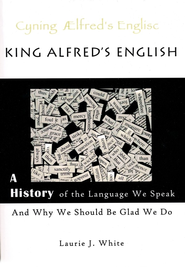Proofreading is not a happy activity. It takes attention to detail and maybe even some groaning.
After all, you feel as if your first draft is enough. You’re done. Finished.
Students tell me that writing the first draft and then proofreading it is like writing their paper twice.
The Bad News
.Here’s the bad news: The skill of proofreading your own papers is essential to the writing process. Why?
First, you learn to write more effectively.
Second, you show respect for your teachers by handing in a well-thought-out paper with few mistakes.
And third, you begin to understand that there is an audience at the other end of your essays. You aren’t writing simply to keep yourself busy; you’re writing to communicate, educate, explain, persuade, or entertain.
The Good News
Here’s the good news: You’re about to learn four sure-fire ways to catch more mistakes when you proofread.. 1. Resize the font. This is an easy way to catch mistakes of grammar, wording, punctuation, and so forth. Things you normally would read right over on the computer screen pop out at you when you resize the font.
1. Resize the font. This is an easy way to catch mistakes of grammar, wording, punctuation, and so forth. Things you normally would read right over on the computer screen pop out at you when you resize the font.
2. Print off the essay and correct it from the paper. If you never read your essays from a real piece of paper, you are missing out on an effective way to proofread. Mistakes you don’t see on the screen become visible on the paper.
3. Look for only one type of mistake at a time. For instance, the first time through your paper, only check to see if each paragraph in the body has a topic sentence. Then see if each paragraph actually supports its topic sentence. Then check to see if each topic sentence backs up your main idea (thesis statement).
After checking the content, look for grammar mistakes in commas and other punctuation, word usage, spelling, and so on. You can’t check everything the first time you read through your paper. Break it down into smaller bites.
.
4. The top, most effective proofreading tip: Read the paper out loud. This is a powerful method of proofreading. It catches mistakes in grammar, meaning, too few or too many words, redundancy, missing words, the logical flow of the points, and so forth. Many times students who have skipped this step are totally embarrassed when they read their papers out loud in my class and see mistakes they could have easily fixed at home.
.
Note: Write your papers a few days before they are due. I can see the eyes rolling now, but it’s true. This way, the essay won’t seem as perfect to you; the cool-off period will enable you to catch more mistakes of all kinds when you approach the paper with a more objective eye.
Now it’s your turn: Speaking of an objective eye, get out a recent essay you’ve written. Then do #s 2 and 4 to it: Print it off and correct it from the paper, and then read your paper out loud. Use a colorful pen to make your corrections.
When you find a mistake or when you want to change something, mark it down on your paper and then enter the changes into the file on your computer. Print the new version. Repeat.
For a tutorial on proofreading marks and how to use them, click here.
For practice proofreading someone else’s mistakes, click here.
Teachers, connect with Sharon on Facebook or Pinterest!
 Are your writers struggling? Do you wish you could figure out why your children won’t write? Would you love to have a peaceful writing class experience?
Are your writers struggling? Do you wish you could figure out why your children won’t write? Would you love to have a peaceful writing class experience?
Help your struggling writers—and you!—by identifying five hurdles to writing. Then learn practical actions you can take against those hurdles.
This article by me in The Old Schoolhouse magazine is also loaded with links to other helpful posts that will give you and your writers some welcome relief.
Click here to drain some of the tension from your writing class
Frustrated that your students don’t finish an essay or don’t know the steps to complete one? Worry no more! Click here for my latest article in The Informer about a super-practical writing schedule you WILL use!












